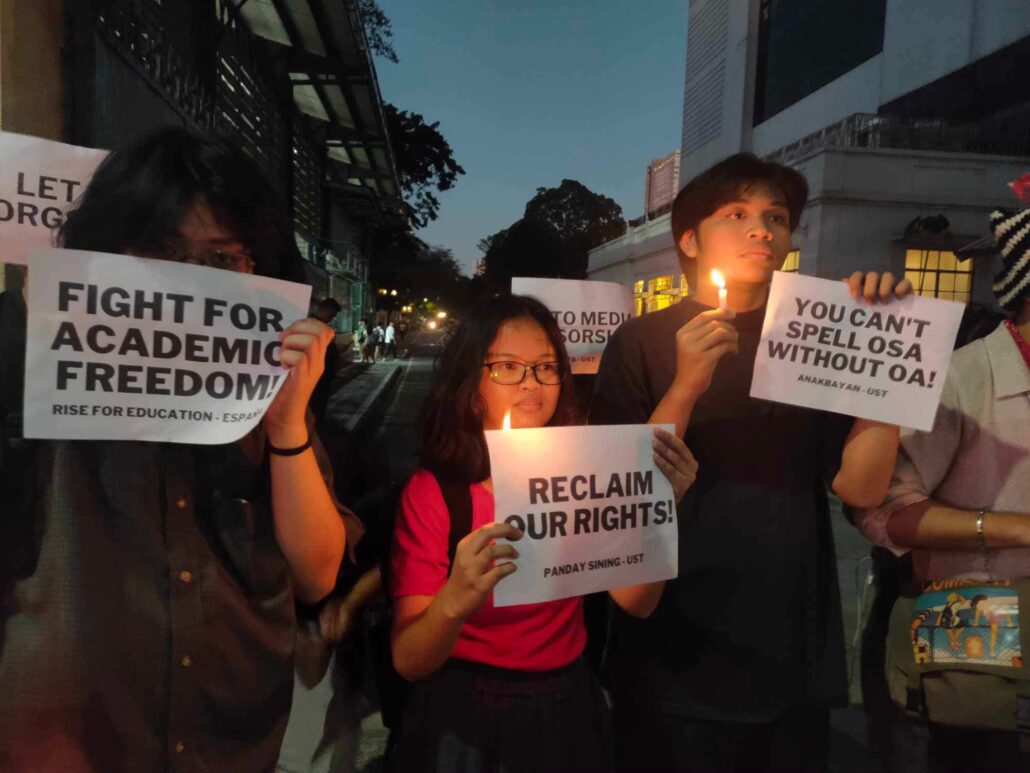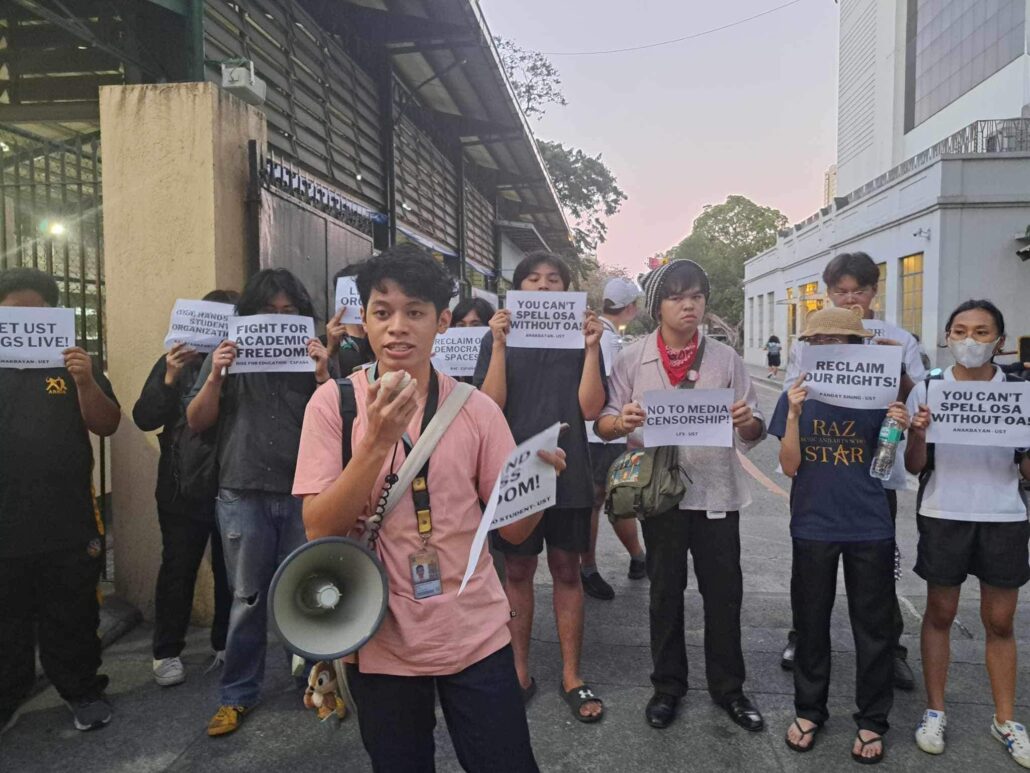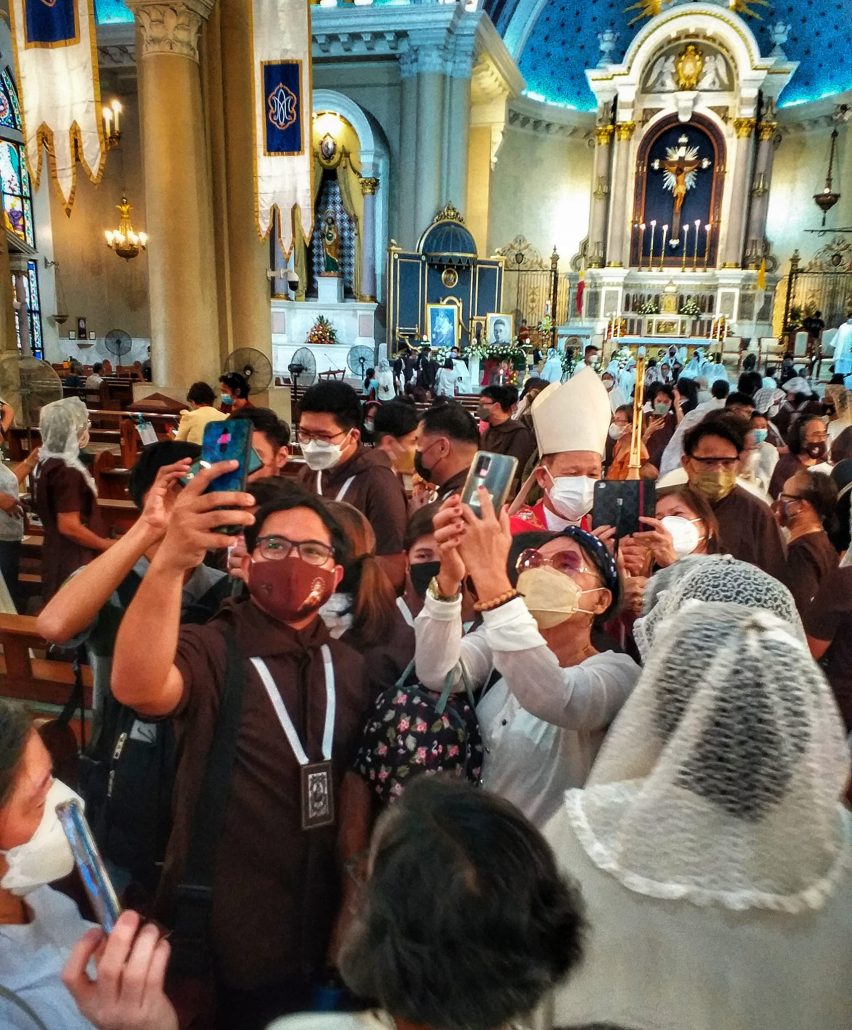UST-OSA takedown of ‘controversial’ photo exposes long-standing student repression
By Maujerie Ann Miranda
The University of Santo Tomas’ Office of Student Affairs’ (UST-OSA) takedown of a student publication’s photo exposed the systematic student repression inside the campus, journalist Leo Laparan II said.
In an interview, Laparan, a journalism professor at the university who resigned as the publication’s adviser to protest the decision, shared that the takedown of the “controversial photo” goes beyond the issue of media censorship.
Last February 16, the UST-OSA had a photo of two College of Information and Computing Sciences students in front of a convenience store taken down because it alleged it has become a source of “public ridicule.”
The photo went viral as it showed the uniform’s likeness to the outfit worn by 7/11 workers.
TomasinoWeb, the online student publication that posted the photo in an album, was also asked to issue a public apology or face closure by school authorities.

Media censorship
Laparan revealed that this is the fifth time under his advisory of TomasinoWeb that UST-OSA censored the publication.
“Matagal nang kinikitil ng OSA ang dapat ay malayang pamamahayag ng TomasinoWeb,” Laparan said.
UST-OSA also censored TomasinoWeb posts on the jeepney phase out struggle, student comments on student activities and a photo of LGBTQ+ couple, the lecturer added.
Laparan said TomasinoWeb was also not allowed to cover the university’s Homecoming Walk.
TomasinoWeb executive editor Miguel Angelo Sumalinog added that the UST-OSA only considers TomasinoWeb as a student organization even if “by nature, the work that we do falls under the publication category.”
“Being under OSA didn’t really stop us from producing news content that’s different from the likes of The Varsitarian or The Flame. Some complications that we do face however is that sometimes we don’t get invited to as much events as the others and some content that we put out, like the current trending one, are being stopped or asked to take down,” Sumalinog revealed.
Laparan said that it is very difficult for a media organization to be under a very controlling and restrictive office such as the UST-OSA.

School intervention, intimidation
Laparan said that the issue exposed student repression in the university.
“‘Di lang Tomasinoweb ang nakakaranas niyan. Maraming student organization ang kinikitil ng OSA,” he added.
He said that the office requires student organizations to submit documents for events months before the actual date, only for the approval to be delayed.
Laparan said, “Ang aga sinasabmit pero ang tagal natutulog sa opisina ng OSA. ‘Di ba malaking problema yun sa mga estudyante na walang magawa kundi sumunod?”
Meanwhile, a student leader who participated in a condemnation rally last February 19 against the TomasinoWeb takedown was ordered to submit show cause letters by the UST-OSA.
Panday Sining-UST chairperson Raven Racelis revealed that the office ordered her to submit proof that they did not violate the university’s code of conduct in attending the rally outside the campus.
She said that the administration had been witch hunting and intimidating students for a long time.
Anakbayan UST chairperson Allen Ballesteros received a similar order last year, demanding they explain why he joined a so-called unrecognized organization.
Racelis said that in 2021, then Grade 12 student Datu Zaldy “Shoti” Ampatuan was dismissed for joining an organization not sanctioned by the school.
The student activist also said that the UST administration had long been intervening in student organization activities.
She cited the recent postponement of a Faculty of Arts and Letters concert in fear of the event turning out to be a venue to protest student censorship, she added.
“Hindi kinikilala ‘yung kapangyarihan ng mga kabataan na pamunuan ‘yung buong student body. Kahit yung Central Student Council (CSC) ay pinipigilan ng OSA na maglabas ng mga ‘politikal’ na mga statement,” Racelis shared.
Student initiatives such as the student code containing the rights of Thomasians and the CSC Constitutional Revision systematizing student leadership were difficult to process, also revealed.
“Wala daw kakayahan ang mga estudyante na bumuo ng mga polisiya,” the student leader said.

Reflection of education system
Racelis said that recent developments in one of the country’s oldest universities are a reflection of the colonial, commercialized and repressive system of education in the Philippines.
She added that UST was originally built to pacify students during the Spanish colonization and is still continuing this orientation.
“Tinuturuan nilang maging tuta ang mga estudyante,” she said.
Laparan for his part said that the UST-OSA is going against the mandate of the university to nurture students.
“Tinatakot ang mga estudyante, hinahayaan maging sunud-sunuran lang. Paano mahuhubog ang mga talento at husay ng mga ‘yan?,” the journalist lecturer asked.
Continuing clamor
Laparan demanded accountability, saying that UST-OSA director Maria Cecilia A. Tio Cuison and her deputy should step down.
“Hindi dapat binibigyan ng kapangyarihan ang mga mapanggipit, mapaniil, at lango sa kapangyarihan,” he said.
Racelis said her organization supports Laparan’s call, adding however that the university must amend its policies on students.
“Kahit na sinong ipalit mo na opisyal sa pamantasan nandiyan pa rin ang pananakot at panunupil dahil ang problema ay hindi ‘yung tao kundi ‘yung sistema na kailangan natin baguhin,” she added.
The student activist said UST students should also demand for a nationalist, scientific and mass-oriented (NSMO) system of education as a solution to repressive school policies.
“Sa NSMO, hinuhubog ‘yung mga kabataang estudyante hindi para maging cheap and docile labor force at maging tuta na lamang. Huhubugin ang mga kabataang estudyante na maging makabayan at tuloy-tuloy na maglingkod sa malawak na hanay ng sambayanan,” she explained.
UST students and alumni meanwhile have mobilized to provide support to TomasinoWeb, condemning media censorship and student repression.
Student organizations held rallies at UST’s P. Noval gate while the alumni have signed unity statements condemning UST-OSA’s decisions.
Students also held a black mask event at the UST Grandstand and a prayer vigil in the front of the Arch of the Centuries last February 23, the first rally held inside the campus in nearly seven years. #






